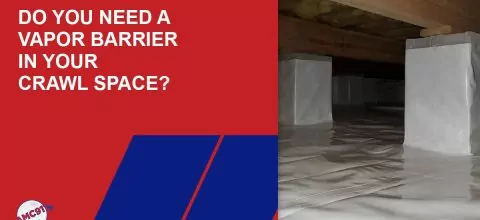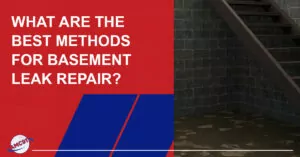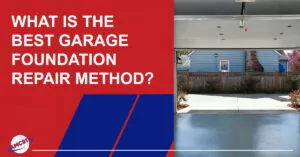Are you thinking about a crawl space vapor barrier for your home? If so, you’ve landed on the right page because that’s what we’re going to talk about in this article. We’ll review the problems with moisture in a crawl space, how crawl space vapor barriers work, their benefits, the installation process, and more.
What Is A Crawl Space Vapor Barrier?
A crawl space vapor barrier is a protective layer of material – usually a thick, durable plastic sheet – used to cover the dirt floor in a house’s crawl space.
The purpose of a vapor barrier is to prevent ground moisture from seeping into the crawl space environment. This helps prevent the accumulation of mold, mildew, and other harmful microorganisms that thrive in damp environments.
Vapor barriers are particularly important in areas that experience high levels of humidity or with a high groundwater table. In these regions, moisture can easily infiltrate the crawl space and lead to problems, such as structural damage, musty odors, and poor indoor air quality because some of the air in your crawl space flows into your home’s living area via the stack effect.
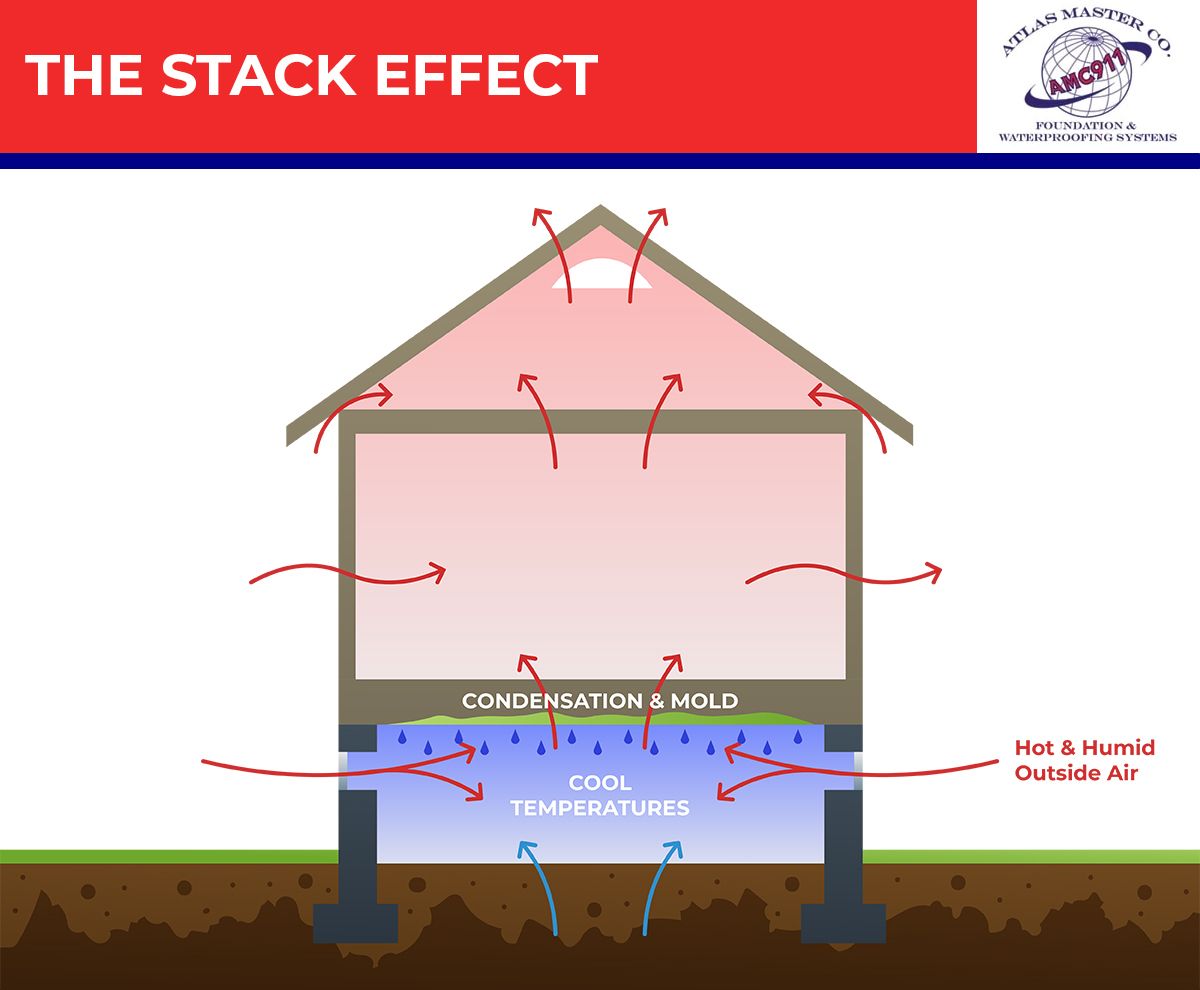
Why You Don’t Want Moisture In Your Crawl Space
Moisture in your crawl space can lead to numerous problems that can be detrimental to your home’s structural integrity and your family’s health. When moisture collects in this space underneath your home, it can encourage the growth of mold and mildew, which can trigger allergies, asthma, and other respiratory issues. Additionally, this dampness can attract pests such as termites, rodents, and cockroaches, which can cause significant damage to your property.

The presence of moisture can also cause wood rot, weakening your home’s foundation and compromising its stability. Moreover, excessive moisture in your crawl space can create a breeding ground for bacteria and other harmful microorganisms, which can permeate the air in your home via the stack effect and lead to unpleasant odors and poor indoor air quality.
Keeping your crawl space dry is crucial to prevent the negative consequences of moisture buildup. A dry crawl space can also potentially lower your utility bills by preventing energy loss, making your home more energy-efficient.
To keep your crawl space moisture-free, we recommend installing a vapor barrier, sealing any leaks, and ensuring proper drainage around the foundation.
Routine inspections and maintenance can also help detect and prevent problems before they escalate, allowing you to address issues promptly and avoid costly repairs. Taking proactive measures to control moisture within your crawl space will protect your investment, maintain optimal indoor air quality, and promote a healthy living environment.
Benefits Of A Crawl Space Vapor Barrier

- Moisture control – One of the most significant benefits of a crawl space vapor barrier is moisture control. When moisture enters a crawl space, it can lead to the growth of mold and mildew. These substances can quickly spread to the rest of the home via the stack effect, causing respiratory problems, allergies, and other health issues. A vapor barrier helps prevent moisture from entering the crawl space, thereby preventing the growth of mold and mildew.
- Potential savings on energy bills – Another benefit of a crawl space vapor barrier is a possible reduction in energy bills. When moisture enters a crawl space, it can lead to humidity buildup and cause the air conditioning unit or heater to work harder. With a vapor barrier, humidity in the crawl space is lower, reducing the strain on the HVAC system.
- Improved indoor air quality – Crawl space vapor barriers also improve the overall indoor air quality of the home. With the growth of mold and mildew prevented, the air in the house becomes significantly healthier and cleaner. Improved indoor air quality can positively impact the health of the occupants, particularly those with respiratory problems and allergies.
How Is A Vapor Barrier Installed?
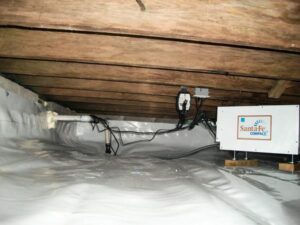
A crawl space vapor barrier – typically a plastic or synthetic material such as polyethylene or polypropylene – is placed atop the crawl space’s dirt floor.
The vapor barrier should be placed on the warm side of the insulation. This means that if the insulation is between the wall studs, for example, the vapor barrier should be placed on the inside of the wall, facing the interior of the building. The idea is that warm air holds more moisture than cold air. Placing the barrier on the warm side prevents this warm, moist air from penetrating the insulation and coming into contact with the cold surface on the other side, where it can condense and cause problems.
Before installing the vapor barrier, it is essential to ensure the surface is clean and debris-free.
What About DIY Vapor Barrier Installation?
DIY vapor barrier installation is enticing for those who want to save money on labor costs or who enjoy tackling home improvement projects themselves. However, this may not always be the best choice, especially if you lack experience installing vapor barriers in a crawl space. If the installation isn’t done correctly, the vapor barrier won’t be as effective.
While DIY vapor barrier installation may seem like a great way to save money, it is essential to consider the potential risks and challenges involved before embarking on the project. Hiring a professional to install a vapor barrier can give you peace of mind knowing that the job has been done correctly and efficiently, reducing the risk of damage to your home or health.
Is There A Difference Between A Vapor Barrier And Encapsulation?
When it comes to moisture management in homes and buildings, the terms vapor barrier and encapsulation are often used interchangeably. However, there is a fundamental difference between these two methods.
A vapor barrier is a material that makes it harder for water vapor to enter your crawl space through the dirt floor. This is why it’s sometimes referred to as a vapor-retarding barrier.
On the other hand, crawl space encapsulation involves not only covering the floor of the crawl space with a thick vapor-retarding barrier but sealing the vents and covering the walls as well. Encapsulation aims to reduce moisture levels in the crawlspace, improving indoor air quality and preventing structural damage caused by excess moisture.

Although both methods aim to reduce moisture levels in the crawl space, they differ in scope and application. Vapor barriers make it harder for moisture from the dirt floor to enter the crawl space. Encapsulation kicks it up a notch and creates a completely sealed environment, preventing moisture from getting through. Most homeowners who encapsulate their crawl space also add a dehumidifier to ensure the humidity level stays low.
It is essential to note that neither method is a cure-all solution for moisture problems. In addition to vapor barriers and encapsulation, homeowners should also consider doing the following:
- If necessary, regrade the yard around your home so it slopes away from the foundation. This prevents groundwater from draining toward the foundation.
- Consider relocating water-hungry vegetation planted next to the house.
- Use downspout extensions to channel water away from the foundation before release.
- Clean your gutters regularly. Gutters clogged with decaying leaves can cause water to spill over the side of the house and soak the ground around the foundation.
- Install a drain tile system. This is the best way to ensure the ground around your home stays dry. For more information, see Drain Tile 101: What Is Drain Tile & How Does it Work?
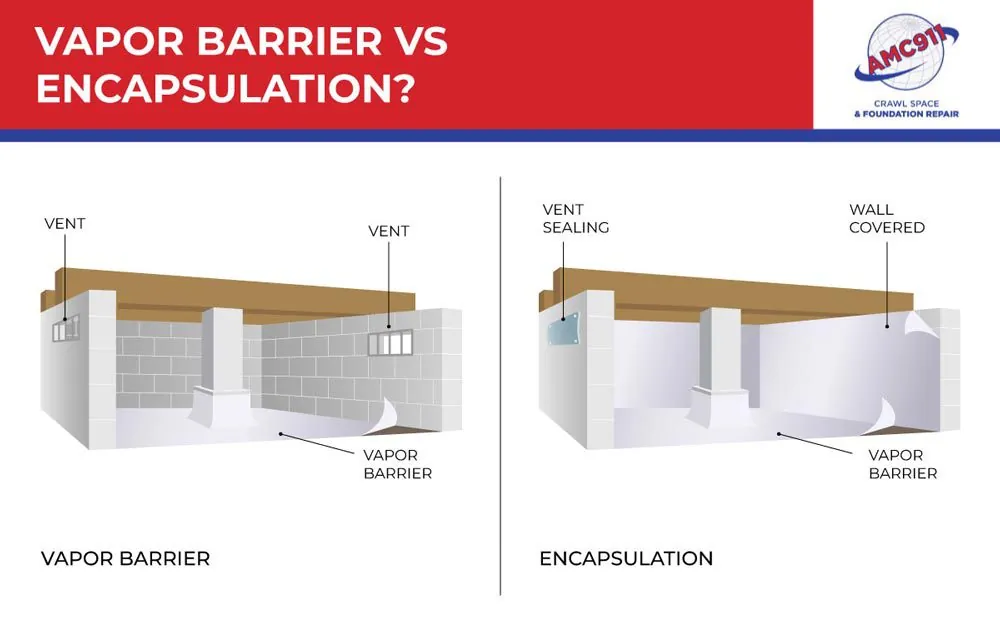
A crawl space vapor barrier is an effective solution for homeowners who wish to prevent damage caused by excessive moisture in their crawl spaces. Homeowners can enjoy a healthy and comfortable living environment by preventing moisture from entering the crawl space, possibly lowering energy bills, and improving indoor air quality.
If you’re concerned about moisture in the crawl space of your Hampton Roads home, contact AMC911 today and schedule a crawl space evaluation.


